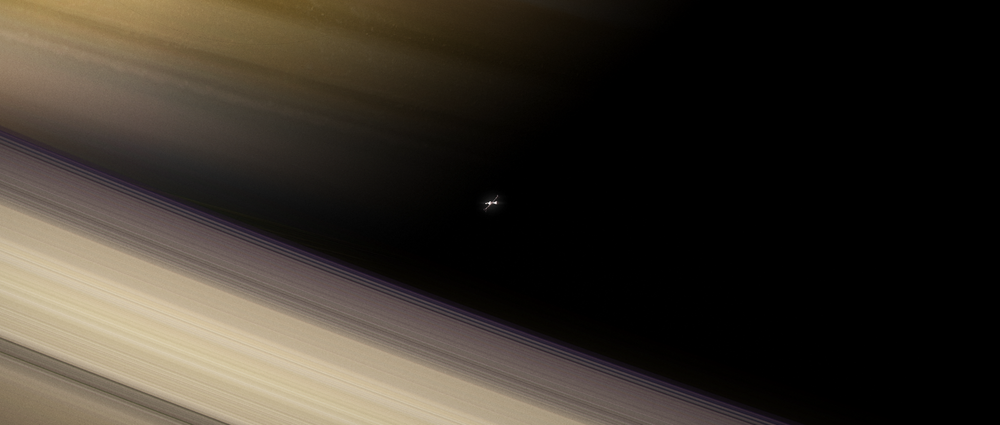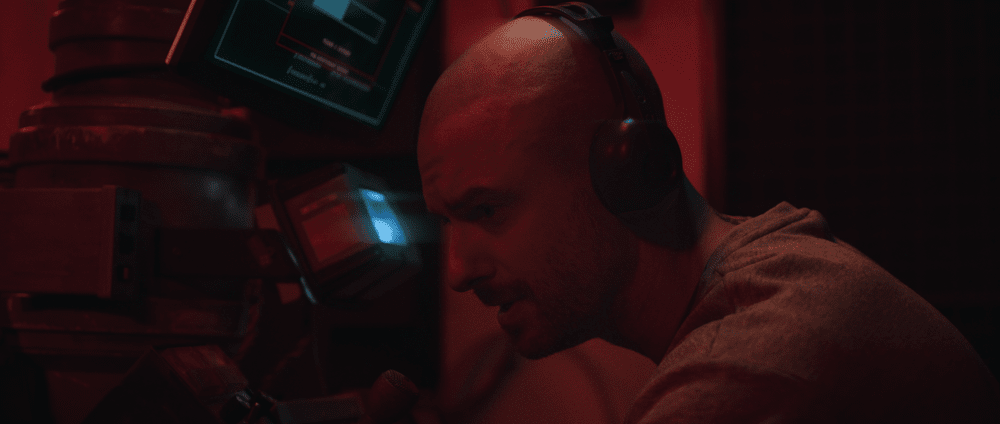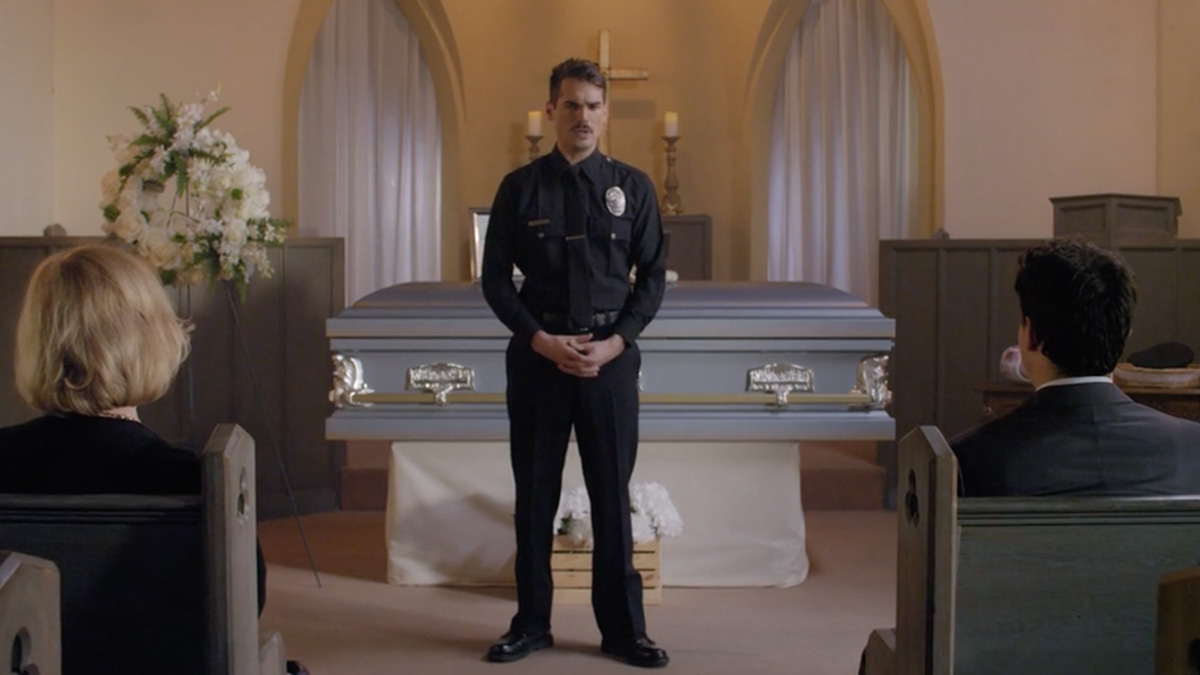After a devastating tragedy, an astronaut struggles to complete his interstellar mission to rescue a lost crew.
Wonderfully shot in a dramatic but delicate tone, director Spencer Zimmerman takes on an interstellar rescue mission after a devastating tragedy. ‘Darkside’ is a science-fiction short film that shows us the fragility of space exploration, particularly on the human emotional and psychological side. Navigating themes of escape, guilt and hope, the viewer is entrapped in the nonlinear story progression which slowly reveals that nothing is lost, but everything is transformed. We had the chance to speak with Spencer who gave us more insight on the film and its process.

Can you tell us what inspired you to bring this story to life?
When I think back on it, there was never really one singular moment where I was inspired to make the film. Instead it was a collection of feelings and moments when I felt like I was at a crossroads in my life.
I was finishing my degree at Capilano University, and I felt that we had this amazing wealth of resources that had never really been used to it’s fullest. Not only in terms of the facilities and equipment available to us, but also I was incredibly lucky to be surrounded by this nexus of very talented and ambitious people and I wanted to make something that really leveraged everyones create abilities while we were still all together.
At the same time I had just lost two of my grandparents (both of whom the film is dedicated to). My grandmother Marjorie who had been married to my grandfather for over 50 years, died very suddenly. It was hard for everyone, but no one was more devastated than my grandfather. It was really difficult to see someone you love so hollow and alone, and really questioning their faith at the end of their life. That left a huge impact on me and I wanted to make something that touched on that kind loss, grief, our connection to the cosmos, to each other, and the cycle of life.
The set design is such an important piece of the story here, can you tell us how it was all built?
With great great difficulty. The genius behind the amazing physical world of the film is my production designer Raine Lemay who is a brilliant artist and filmmaker in his own right, as well as the costume designers Tabeni Lightheart and Alex Godlewski.
To keep the film feeling grounded and real, it was really important to us to build as much of the world physically as we possibly could – that is to say real sets, real miniatures, real animals, and real special effects. Being a student film, we had an extremely limited budget to work with and we knew we couldn’t build everything at full resolution, so we had to get clever. I needed to be extremely specific about what we saw in which scenes so we could not only know what really needed extra attention to detail, but also make sure we weren’t building anything that wasn’t going to end up on screen.
Pretty much everything you see is either thrifted or recycled and it was just a matter of being creative with what we had on deck. The Genesis II miniature is made entirely out of beer cans and yogurt containers, the escape pod interior is an old hollowed out projection TV I found on craigslist that we added a chair and some lights to. Once we had those basic structures it was down to Raine to really dive in with the details and bring the sets to life. We tried to keep the details thoughtful, adding things like emergency instructions on the wall panels, life packs strapped to the hull of the ship, things that might actually be there if this were to be a functional space craft.

What was the most challenging scene for you to film?
That’s a great question because EVERY scene was challenging for some reason or another. Be it working with kids, with wolves, with special effects – I really didn’t make things easy for myself. But by far the most challenging day was our location for the surface of the planet.
Logistically it was just huge. We had an incredibly sensitive location as it is an ecological reserve, meaning not only did we have to be very very careful not to damage it or the surrounding environment, but there was also a very strict curfew enforced by the city. So we were racing the clock to get everything in the can and we had no opportunity to reschedule if we missed anything (which was terrifying because we had more to shoot on the first day than the next two days of shooting combined!). We had stunts, two camera crews, costume malfunctions, broken props that needed replacements (that were a 30 minute drive away) and to top it all of, it was Friday the 13th!
In the end though, we made our day with seconds to spare and it was a huge success, which I find hilarious because this was March of 2020, and of all the cursed things that could have gone wrong, it was two days later the movie was shut down for the next 6 months due to the then-burgeoning onset of COVID-19.
What has this film taught you about filmmaking?
My producer/editor Braiden Van Grootel and I often joked throughout the making of Darkside that it was the film that kept on giving – and it really was in a lot of ways. This was easily the most challenging project (both creatively, technically, and logistically) that any of us on the crew had ever done, filmmaking is a constant act of problem solving, but this was something else entirely. I think ultimately despite the scale and complexity of the production, the biggest lessons were in the nuts and bolts of the storytelling. Because we were shut down by covid, I had an opportunity to take a look at what we had done, and rework the story. By the time we got back to shooting, it was almost a different movie. That same thing happened in the editing process, where we had these “aha” moments and realized what the story was really about – we would edit for a few weeks until we realized we needed more footage, then would shoot again and repeat the process over and over. It took us 9 months and we had something like 12 hours of raw footage by the end of it all, which was whittled down to a 11 minute movie. Obviously this was a very unique situation that I don’t think I’ll be able to fully replicate ever again but the point stands that the writing process never ends until the picture is locked.

Do you have any tips or advice to offer fellow filmmakers?
This is tricky because I always feel much more qualified to receive advice than to administer it. But if I had to say anything it would be to stay persistent – you have to believe in your film more than anyone else. That’s your job as the director – to inspire people to do their best work. I can’t count how many times there was doubt cast by either professors or peers or whoever, people who didn’t think we could pull something like this off at the student level. No matter what you just have to keep your head up and soldier on.
Which films you can say directly inspired this film?
It’s impossible to name them all but a few that really inspired this were of course 2001 A Space Odyssey – I don’t think anyone anywhere can make a space film without owing some debt to Kubrick. Krzysztof Kieslowski‘s Three Colors Blue was also hugely influential – his economy of filmmaking and the way he bonds story to music and sound is so visceral. Another big influence wasn’t actually a film at all but Vladimir Nabokov’s novel Pale Fire. Obviously more so the poem in the first half than the metafictional commentary in the second.

What are your favorite short films?
That’s tough to nail down! I could go on about this forever too but a few of the films I saw this year that I adored are Clara Milo’s Aska, Solmond MacPherson’s A Wolf In Dudes Clothing, and Pepi Ginsberg’s The Pass.
And then two all time favorites I need to mention are Jim Cummings’ Thunder Road (watch on FS), and Joschka Laukeninks’ Backstory (watch on FS)




